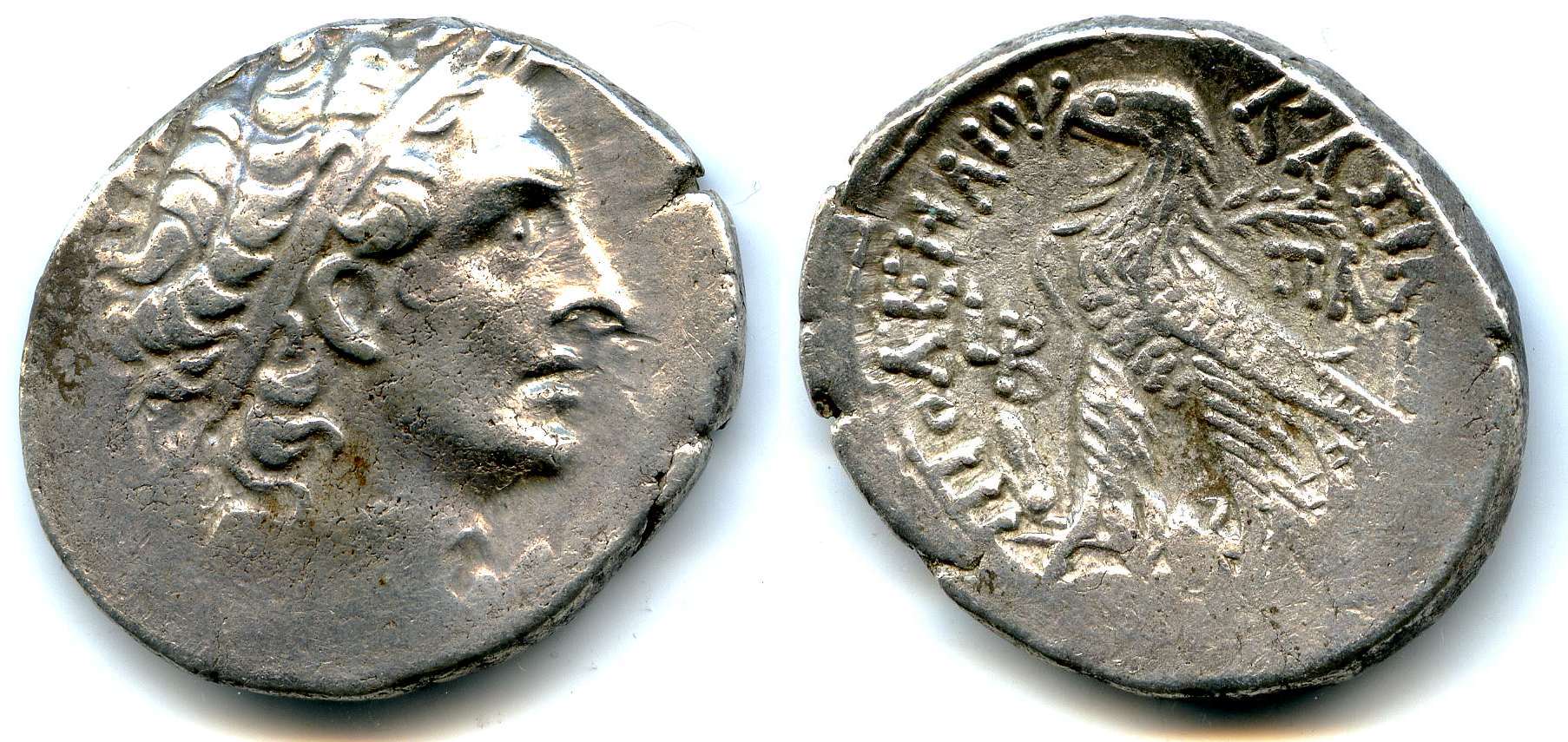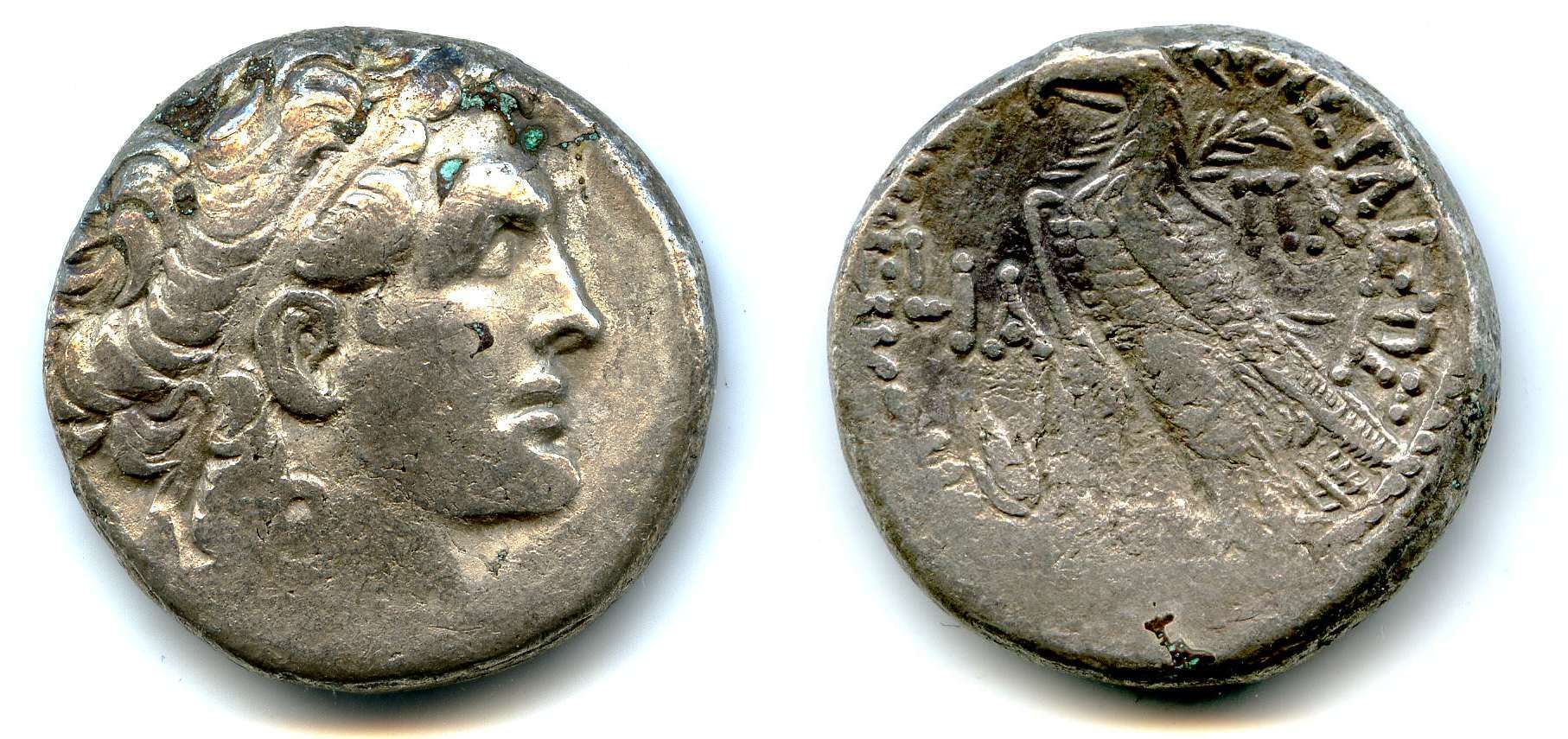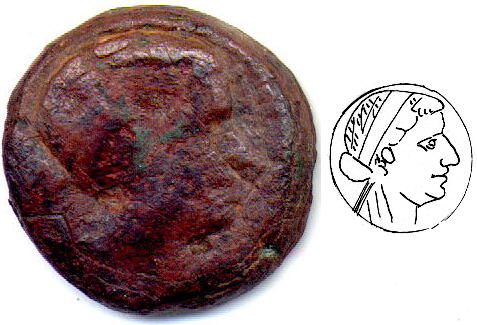Cleopatra VII, Queen of Egypt
Born 69 B.C., Ruled Egypt, 51-30 B.C.

Debased silver tetradrachm (4-drachm piece), 26 mm
Obverse: Head of Ptolemy I facing right.
Ptolemy I was a general of Alexander the Great, and
founded the Ptolemaic dynasty.
Reverse: Eagle on thunderbolt (the badge of the Ptolemies). A palm
branch is behind the eagle's shoulder. The coin has a date in Greek: LB,
or year 2 of Cleopatra's rule. This corresponds to 50-49 BC. This is the
traditional Ptolemaic tetradrachm coin design, with a few minor modifications
added to the design by Cleopatra's father, Ptolemy XII, in year 27 of his
reign. When Cleopatra VII became ruler the designs remained the same; only the
regnal year started back at 1.

Debased silver tetradrachm (4-drachm piece), 25 mm Same designs as the coin
above, only the date is different. This coin is dated LIA, or year 11 of
Cleopatra's rule. This corresponds to 41-40 BC.

Copper 80 Drachms, 26 mm (480 copper drachms were the equivalent of one silver
drachm)
O: Head of Cleopatra facing right.
R: Eagle on thunderbolt.
Existing coin portraits of Cleopatra are not very flattering, at least by
modern standards. Cleopatra's legendary powers of seduction were likely
due to her charisma, intelligence, and personality, rather than physical
beauty.
Cleopatra was the name of the seven queens of ancient Egypt's Ptolemaic
dynasty. By far the most famous was the last of the Ptolemaic dynasty,
Cleopatra VII. She made extraordinary efforts to revive Ptolemaic power
through her forceful personality and political skill, efforts which involved or
led to romantic liaisons with both Julius Caesar and Mark Antony. Her life and death at her own hand have
been the subject of much literature, including William Shakespeare's Antony
and Cleopatra and George Bernard Shaw's Caesar and Cleopatra.
The daughter of Ptolemy XII, Cleopatra became joint ruler with her younger
brother Ptolemy XIII in 51 BC. Three years later they fought each other in a
civil war, during which time Cleopatra was briefly expelled from Egypt.
During her exile she met and captivated Julius Caesar, who was in her part of
the world because of a Roman civil war. (He was in pursuit of Pompey the
Great, who was ultimately assassinated in Egypt by Ptolemy). Julius
Caesar invaded Egypt and defeated Ptolemy, re-installing Cleopatra as
queen. Cleopatra married another of her brothers, Ptolemy XIV, but she
also became Caesar's mistress and followed him to Rome, where she stayed until
his assassination (44 BC).
Returning to Egypt, Cleopatra ruled with her son by Caesar, Ptolemy XV, called Caesarion, as joint king, Ptolemy XIV having been murdered on her orders. In 41 BC she formed an alliance with Mark Antony, whom she married in 37 BC. They planned to set up a vast kingdom to be inherited by her sons by Caesar and Antony. However, Octavian (later Augustus) defeated Antony and Cleopatra in the Battle of Actium (31 BC) and pursued them to Egypt. Antony committed suicide. Cleopatra surrendered and sought to establish a relationship with Octavian. Failing, she killed herself in August 30 BC, allowing herself to be bitten by an asp (cobra), the royal symbol of ancient Egypt. Her son, King Ptolemy XV, was murdered, and the Ptolemaic dynasty ended.